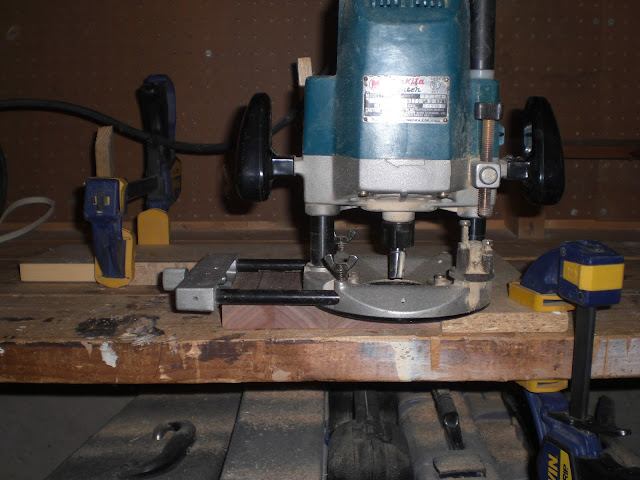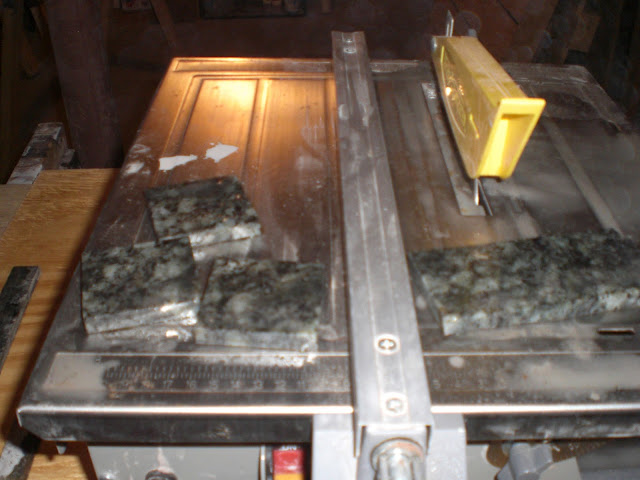
Since it's such a rainy day today, I took the opportunity to cross off one of the longstanding items on my to-do list.
The day we brought out son home from the hospital, the floor outside of his room started to squeak. I swear that when we left for the hospital, they didn't squeak - but the very first time we tried to tiptoe out of his room, the floor made more noise than a nest of baby mice.
A year later, I ran across this video from This Old House, which was showcasing a kit that dealt with squeaky carpets. The video can do a better job of explaining the process than I can, so head over there for the full details! Basically, this kit will stop creaky floors, squeaky floors, and noisy floors. Carpet is easiest, since when you finish everything is hidden, but it can also do hardwood floors too.
Fixing the floor started off with finding the joists. To do this, the kit includes a pair of long rods with a short section of thread on one end. Drill that straight through the floor where you think the joists are - if you're right, when you go to reverse the bit out, the drill will rise without you needing to pull it. If you missed the joist, the drill will spin without backing out of the hole unless you pull on it. Careful - the bit heats up quickly, let it cool down between joist-finding attempts.
Once you've found a joist at one end of your squeaky area, you can measure to the side by sixteen inches (usually) to find the next joist in line. Check at 16" intervals using your tape measure and the joist finding bit, then drive in a screw a little way to mark the spot. You'll be changing bits a lot, so either use two drills or a hex bit adapter so you don't have to retighten the chuck every time.
Once you've got two rows of screws outlining the squeaky area, you can fill in the middle sections. The package recommended driving the screws 4" apart along the joist line, but I went with 8" since I wasn't sure if I had enough screws. Stretch your tape measure between the screws you drove into the joists earlier, so you know that you're hitting a joist.
The kit comes with a square driver and a three-pronged depth control fixture, which makes sure you don't drive the screw in too deep.
Using the square driver, drive the screw into the carpet until the stop bottoms out in the depth controller.
When you've driven it in, you'll see that the screw head is sticking up a little bit above the carpet, sure to be painful if stepped on. Don't worry - they thought of that.
When you are completely finished with the floor, and happy with the lack of squeaks, you can snap the heads off of the screws. Wait until the very end for this - you don't want to have to repeat all the work finding the studs, and you can see where you've already driven in screws near problem areas. Test it out by walking around, and when you're finally happy with it, pull out your depth setter again.
See the little cutout on one of the three feet?
Slide that over the head of one of the screws
Give it a twist to the left and right
The top of the screw, which has a weak spot designed in the shaft so it will snap below the surface of your flooring, will snap off.
Snap off all the screw heads in the floor - when you're done, you'll have a nice tidy pile of screw tops.
That's it! Now that I know it works, I've ordered some more screws to do the other squeaky spots upstairs. When I'm done, it will sit on my shelf for years - anyone want to borrow it / buy the extra screws in a couple of weeks? Cheap cheap cheap ...
How do you do a before and after picture of a squeak? I took a video of the floor before ...
... and another one after. No squeaks! I love it ...
Materials for this project: this kit. Extra screws, naturally, cost extra money - but the fifty that came with this kit were enough for the hall, so I'm happy. I feel good enough about the project to invest in more screws to do the rest of the upstairs, though I wish they had a 100-count pack, since 250 will be way more than we need.















































.JPG)

.JPG)

.JPG)
